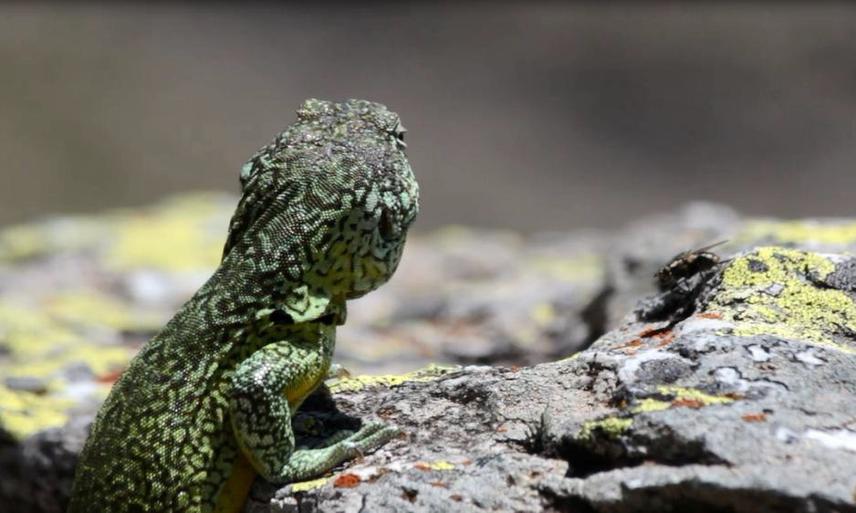Pablo Gervasio Grilli
Other projects
19 Aug 2013
Conservation of the Critically Endangered Copper-Lizard (Pristidactylus casuhatiensis) in Ventana Hills, Argentina
Through the present project, we expect to achieve a) find populations of Copper-lizard outside nature reserves, b) increase awareness of the species at the local and regional levels, c) continue assessing the effect of main threats, d) building the Conservation Action Plan for the species, and e) build capacity among local leaders.

Calliphorid fly in front of an individual of Copper Lizard.
Habitat loss and fragmentation, exotic predator species, pet trade, and climate change, are contributing to the decline of many lizard species worldwide. The Copper-lizard (Pristidactylus casuhatiensis) is an endemic species restricted to Ventania hill´s grasslands, in Central Pampas of Argentina. This species is another case of lizard´s decline in South America, but Copper-lizard is a critically endangered species, currently imperiled due to the existent of threats affecting its wild populations. Our previous work supports that wild populations are at the edge of extinction. However, at present moment ecological information is scarce. Here, we will continue working to update current distributional status, population ecology, and effect of main threats on lizards’ populations. This project will allow improving a conservation action plan for this lizards and its habitat. Awareness raising and capacity building activities will engage people and conservation leaders in protection of Cooper-lizard and its habitat.
Current knowledge of distributional range of Copper-lizard is restricted to three sites historically very visited by tourists. However, no records of presence of this species exist at non-touristic sites. We will reach these sites, covering at least 1000 hour/men effort performing exhaustive searches. In sites of confirmed presence of the species (Cerro Ventana, Tres Picos and Destierro), in order to live some days with the wild populations of the species. During these days we will record information of natural history of individuals in a non-invasive way: we will use digital video to record information. We will give conferences in schools and centers of towns and cities neighboring to Ventania: Tornquist and Coronel Suárez. We will edit posters and pamphlets and diffuse them in NGO´s, local media, local people and tourists. We will build and set up trail signs in two touristic hill trails where the presence of the species were confirmed: Cerro Ventana and Cerro Tres Picos. We will also develop workshops with local people and Park Rangers in order to find local actions for the conservation of this species and their habitat. All the information gathered by the conservation project will be continuously updated in social.
We will perform workshops with several stakeholders of the area (Park rangers, touristic guides, conservationists, managers and biologists among others) to make an Action Plan for the species. After, we will show them the results of previous work and to give them the Action Plan created.